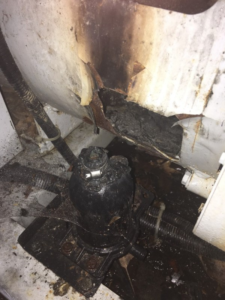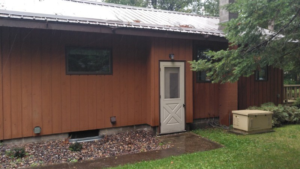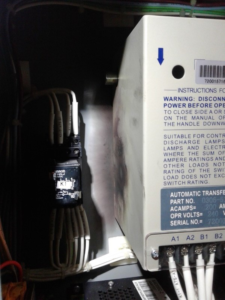Hazardous Energy: Tips for Generator Safety
In 2017, Hurricane Irma left more than 60% of Floridians without power in the days following landfall. The disaster meant more than a loss of power for them, however. The storm destroyed millions of dollars’ worth of property, and people couldn’t even begin to rebuild or return to normal life during the blackout.
While every power outage may not be this extreme, even a few hours without electricity can cause disruptions. As a result, generators — both portable and standby — are becoming more common.
However, as the popularity of these devices grows, insurance adjusters are seeing an increasing number of claims involving generators. Not only can they suffer damage from impact or other perils, but generators can also cause damage, due to their intricate operation and combustibility. As an insurance adjuster, you need to know how generators can be dangerous and what your policyholders can (and should) do to prevent these damages.
Fire Prevention

Fuel storage is another critical consideration. Fuel should be stored on a floor at least 50 feet away from any ignition source (including pilot lights, grills, and the generator itself) in a well-ventilated location out of the sun. It’s also vital that your insured doesn’t refuel a generator while it’s on (or even warm), as the fuel could ignite, and worse, follow the fuel path back to them, causing serious damage and injury. Additionally, flammable materials should never be stored near a generator.
Generator owners should also take these additional precautions:
- Keep a fire extinguisher nearby in case a fire does occur.
- Use heat-resistant gloves when touching a generator to avoid burns.
- Perform routine maintenance on a generator, as faulty wiring and connections can also spark a fire.
Carbon Monoxide Safety

Generators produce harmful carbon monoxide (CO), so their safe location is critical to protecting a structure’s occupants. CO has no odor or color, enabling it to build up in an enclosed space and easily rise to lethal levels without the occupants noticing. Therefore, if a property has a generator, it should also be equipped with a carbon monoxide detector. In addition, generators should never be located underneath a deck, indoors, in a garage or basement, or within 5 feet of a door or window. Generator owners should also take airflow into consideration, as the wind can blow CO into openings even if they are farther away than the required minimum distance.
Electrical Damage Prevention

Additionally, users should never turn the generator on or off while it’s under load (i.e., actively providing energy to appliances or devices). An automatic transfer switch (ATS) should be used to connect a standby generator to the powered building to prevent electrical damage to either the generator or the structure. For a portable generator, any powered appliances or devices should be plugged into the outlets attached to the generator itself. These should be connected using extension cords rated for outdoor use and for the electrical load (in watts or amps) required by the device being powered.
Finally, safety precautions should be in place any time a user tries to make adjustments to a generator — particularly a portable generator — during rainy or flooding conditions. It’s best not to touch the generator at all during these times, due to the increased risk of fatal electric shocks.
Portable generators can be kept dry during inclement weather conditions by placing them under an open canopy. Standby generators have their own housing to protect them from the elements, but users should still avoid handling them during wet conditions to minimize the risk of injury.
What Happens When Prevention Isn’t Enough?
Unfortunately, prevention efforts don’t stop every potential danger. When something slips through the cracks and your policyholder’s generator catches fire or overloads their other electronics, StrikeCheck can help. We see many generator claims every year, and our experts know what to look for when determining cause of loss, damages, and local market pricing for repairs and replacement. If you have a policyholder with a damaged generator, we can have a technician out ASAP to assess the damages and determine how to bring them back to pre-loss condition.
Don’t let uncertainty slow down your claim settlements. Allow us to help you resolve electronics claims quickly and more accurately by submitting a claim.
